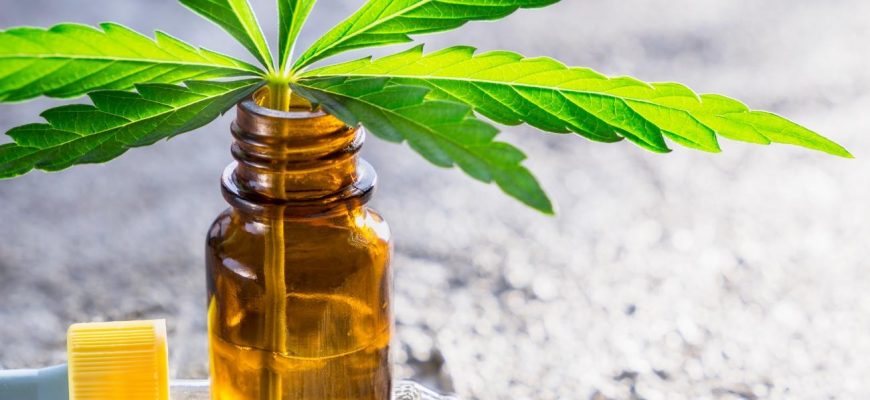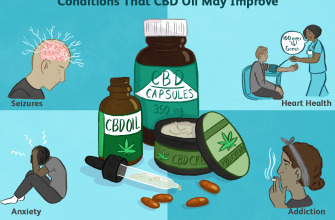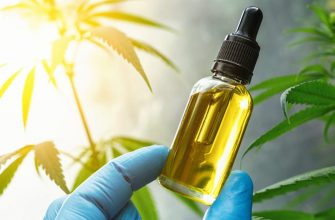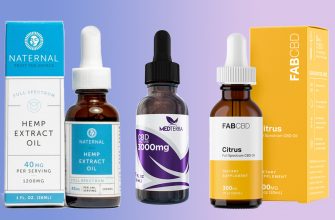Recently, the topic of medical marijuana has been increasingly emerging in foreign media, scientists are trying with all their might to knock out permits and funding for research in this area, believing in its prospects, and in many countries of the world processes of decriminalization and legalization are actively underway.
Most of the hype right now is caused by a substance like CBD or cannabidiol, found in the cannabis plant. Today, it can be found anywhere from food to makeup, and it is legal to buy it in the form of oil from online stores.
And all because CBD has no psychoactive properties, unlike tetrahydrocannabinol (THC), but it has medicinal properties…
Since CBD is an active component of marijuana itself, you can get a profit from it by smoking a joint in the old fashioned way. The main thing is to make sure that your joint is filled with a strain with a predominance of this particular substance, and not THC, if you just want to relax and relieve anxiety or pain, and not, as usual, get stuck in the couch, unsuccessfully trying to cope with paranoia.
Let’s take a look at how this magical cannabidiol works by drawing on the latest data from the world of science and the experience of consumers using CBD as a medicine, not just for fun.
Difference Between CBD and THC Effects
Since cannabidiol is not a psychoactive substance, you will not be able to get high from it, but it is easy to increase your productivity, relieve anxiety and relieve pain. CBD does not confuse thoughts, does not impair memory, and muscle relaxation does not turn you into a vegetable, as is often the case from smoking THC-dominated cannabis varieties.
If the ratio of these substances is approximately the same, then you will find a slight euphoric and the aforementioned beneficial effects at the same time. At the same time, such negative consequences as paranoia, dry mouth, dry and red eyes, hunger and gluttony, drowsiness and problems with short-term memory, which are often caused by THC, do not occur. These varieties are most commonly used as a pain reliever.

While CBD works well on its own, some experts still insist that when combined with other active ingredients in marijuana, it is more beneficial:
“To achieve the best therapeutic effect, you need a mix of cannabidiol, THC, and the phytochemicals terpenoids,” says Lester Grinspoon, Ph.D. at Harvard Medical School.
However, how exactly this effect is achieved, scientists cannot yet say with accuracy. This knowledge gap is primarily due to a lack of research data, since the field of studying the healing properties of cannabis is still in its infancy. But the gradual legalization of medical marijuana suggests that scientists will soon have more freedom to experiment. So we keep our fists, we hope and believe.
What diseases can cannabidiol help to cope with?
Several scientific studies support CBD’s anti-inflammatory, analgesic, and antipsychotic properties. In this regard, doctors hope that this substance will help pharmaceutical companies in the development of effective drugs against a variety of disorders and diseases accompanied by similar symptoms.
The list of such diseases includes, but is not limited to, such pathological conditions:
- Epilepsy and seizure disorders.
- Various inflammations with severe pain syndrome.
- PTSD and Anxiety Disorder.
- Crohn’s disease.
- Multiple sclerosis.
- Opiate withdrawal syndrome.
While there are no full-fledged CBD-based drugs to combat these disorders, numerous patients claim that the substance does help relieve and even get rid of their symptoms.
Its main component is cannabidiol, the anticonvulsant effect of which has been confirmed by the FDA in its own tests. Today Epidiolex is used to treat severe epilepsy and rare disorders that cause frequent and intense seizures in children, such as Dravet syndrome and Lenno-Gastaut syndrome.
And yet, before Epidiolex, there were other drugs based on the ingredients of marijuana. For example, the Belgian company Solvay Pharmaceuticals back in 1985 created Marinol (dronabinol), a drug that is, in fact, just synthetic THC, used to this day to increase the appetite of cancer patients undergoing chemotherapy.
British pharmaceutical group GW Pharmaceuticals in 2010 developed Sativex, a drug containing equal parts CBD and THC to relieve muscle spasms and other symptoms of multiple sclerosis.
The mechanism of action of cannabidiol
Although there is not so much data on how CBD exerts its healing effect on the body, scientists already have some thoughts on this matter. Surprisingly, cannabidiol does not bind to the active sites of the CB1 and CB2 cannabinoid receptors, as does the same THC. But it interacts with the GPR55 protein secreted in the brain and peripheral organs. Researchers believe that this is responsible for its antispasmodic effect.
In the brain, CBD regulates the synaptic transmission process, during which signaling molecules are transmitted from one neuron to another. The connections between these brain cells are strengthened when GPR55 is activated.
Seizures occur when neurons become too active in transmitting signals, flashing more often than necessary. Cannabidiol blocks the GPR55 protein, thus preventing overloading the synaptic transmission system, according to Ben Whalley, head of research at GW Pharmaceuticals.
The association of this protein with CBD is supported by experiments with genetically modified rodents, which have caused epileptic seizures. Those animals that had GPR55 present responded to the cannabidiol treatment, and the protein-free rats continued to convulse.
Welley also believes that CBD may help desensitize the protein TRPV1, which is involved in the transport of ions and calcium in the body, which can also help relieve cramps. At first, cannabidiol activates this protein, but then quickly desensitizes the ion channel, effectively blocking the transport of calcium into cells. Similar to GPR55, animals lacking TRPV1 do not respond to CBD.
Finally, this substance interacts with the transport channel of adenosine, an anticonvulsant substance produced by the body. Wellley believes that cannabidiol suppresses seizures, mainly due to its effects on adenosine, but more experiments are needed to confirm this hypothesis.
With such a wide range of areas in which CBD is active, scientists speculate that CBD may also be useful in the treatment of movement disorders such as Parkinson’s disease. And the interaction with serotononant receptors suggests that cannabidiol can be used to treat depression, anxiety and psychotic stages of bipolar disorder and schizophrenia.
Yet many researchers, such as Roger Partwey, a professor at the University of Aberdeen and Head of Pharmacology at GW Pharmaceuticals, insist that without clinical evidence, it cannot be said with certainty that the interaction of CBD with these receptors and proteins means that it induces therapeutic the effect of this substance.
Cannabis strains high in CBD
Finally, we will give you a list of popular cannabidiol-dominated strains, so you know what to ask about next time in yourtelegram supermarket:
- ACDC
- Harlequin
- Canna-tsu
- Dancehall
- Remedy
- Sour tsunami
- Cbd mango haze
- Pennywise
Enjoy your relaxation!







